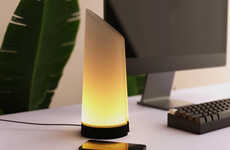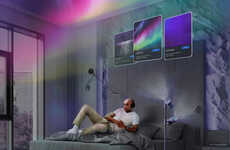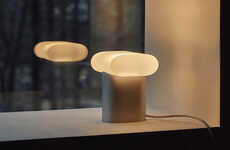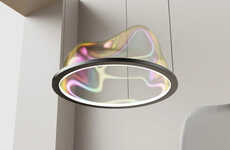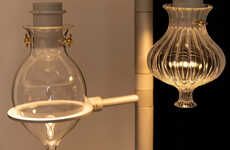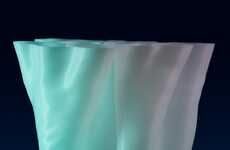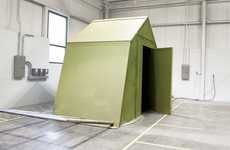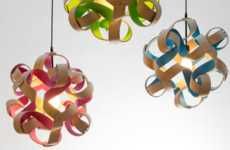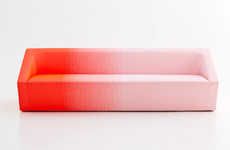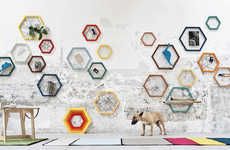A Simulated Design Process Produces Lamp from Digital Serendipity
Amelia Roblin — December 24, 2015 — Art & Design
References: yankodesign
This cubist disco ball was was created through a cutting-edge technology of simulated design, representing an aesthetic language that's co-founded by computers. When you observe the forms and features of this fragmenting box, note that its appearance was not the product of a human's mind, but rather a still frame from a processor's evolving animation.
Of course, some human involvement was necessary to initiate the production of this futuristic light fixture. Together, Seohyeong Kim, Jaeeun Shin and Taimin Ahn worked to design the computer simulation, launch it, and watch as the shape unfolded into a surface of separating squares. Called the Qrash Lamp, this contemporary piece signifies a tantalizing collaboration between man and machine to make something unique and oddly organic. We'll certainly be seeing increasingly more simulated design across industries.
Of course, some human involvement was necessary to initiate the production of this futuristic light fixture. Together, Seohyeong Kim, Jaeeun Shin and Taimin Ahn worked to design the computer simulation, launch it, and watch as the shape unfolded into a surface of separating squares. Called the Qrash Lamp, this contemporary piece signifies a tantalizing collaboration between man and machine to make something unique and oddly organic. We'll certainly be seeing increasingly more simulated design across industries.
Trend Themes
1. Simulated Design - Simulated design is a trend that involves using cutting-edge technology to create unique and organic products.
2. Man-machine Collaboration - The collaboration between humans and machines is a trend that is leading to the creation of innovative and unconventional designs.
3. Increasing Adoption of Simulated Design - The adoption of simulated design is a growing trend across various industries.
Industry Implications
1. Lighting - The lighting industry can leverage simulated design to create futuristic and visually striking light fixtures.
2. Product Design - Simulated design has the potential to disrupt the product design industry by offering new methods for creating unique and organic products.
3. Creative Arts - The creative arts industry can explore simulated design to push the boundaries of artistic expression and create unconventional and visually stunning pieces.
3.9
Score
Popularity
Activity
Freshness
